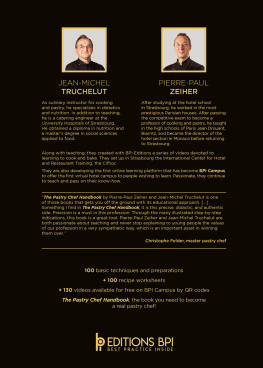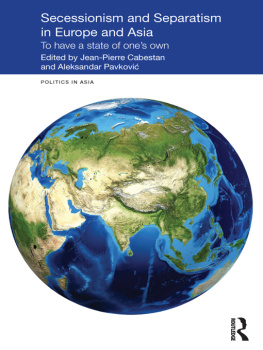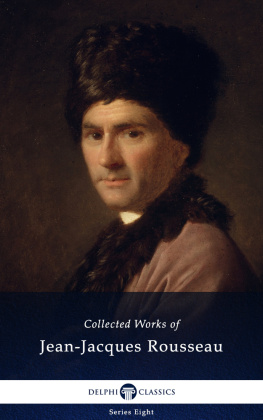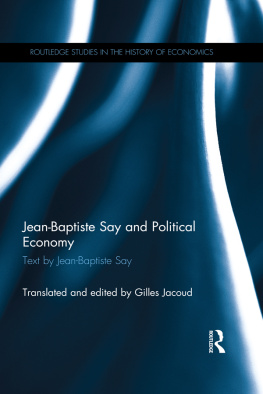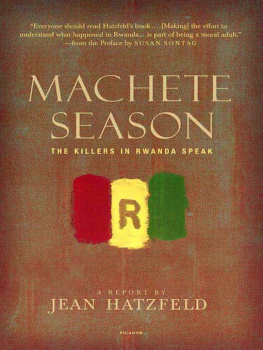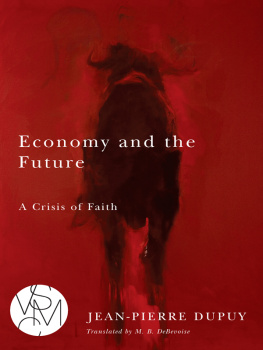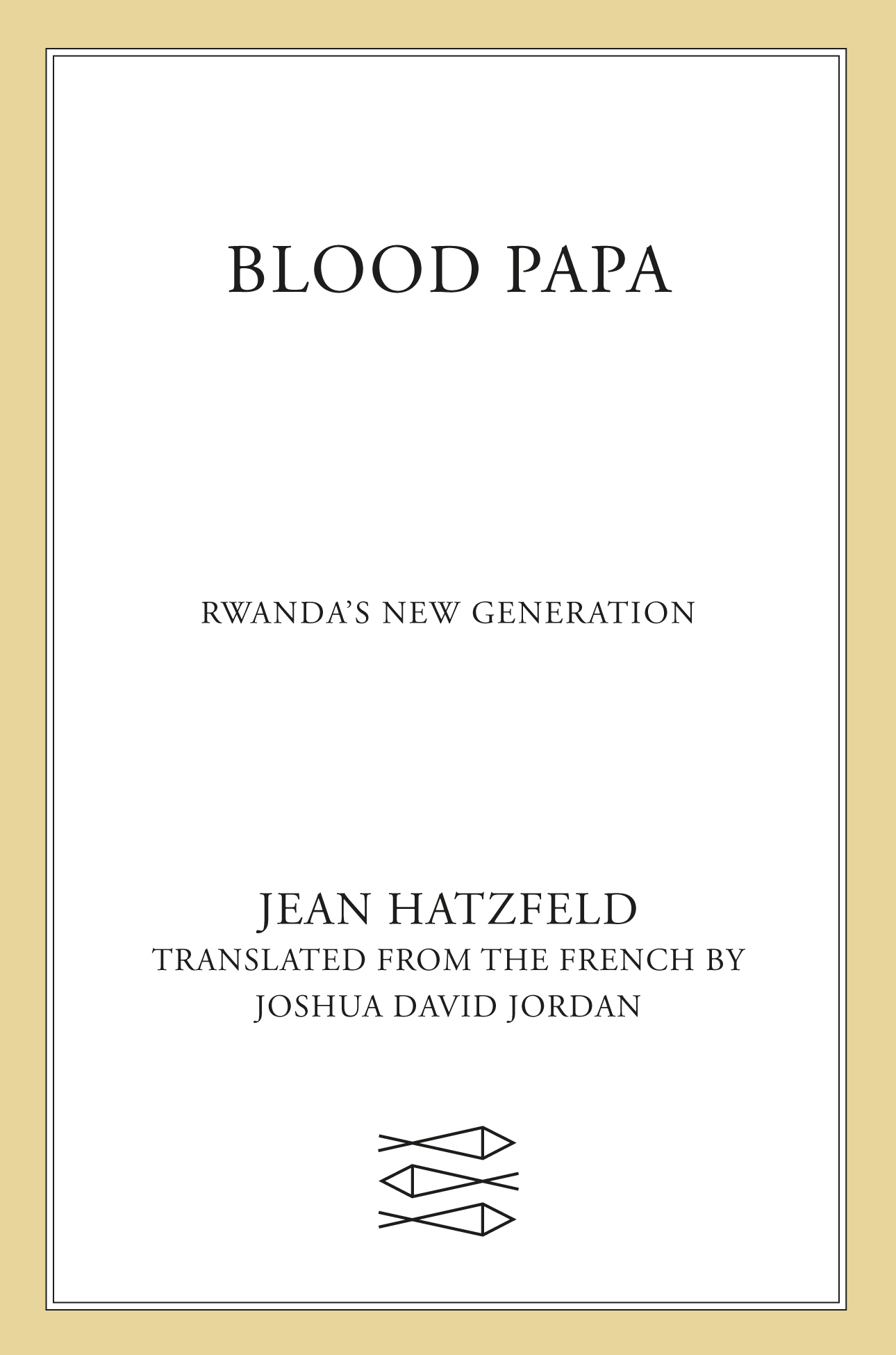Contents
Guide
Pagebreaks of the print version
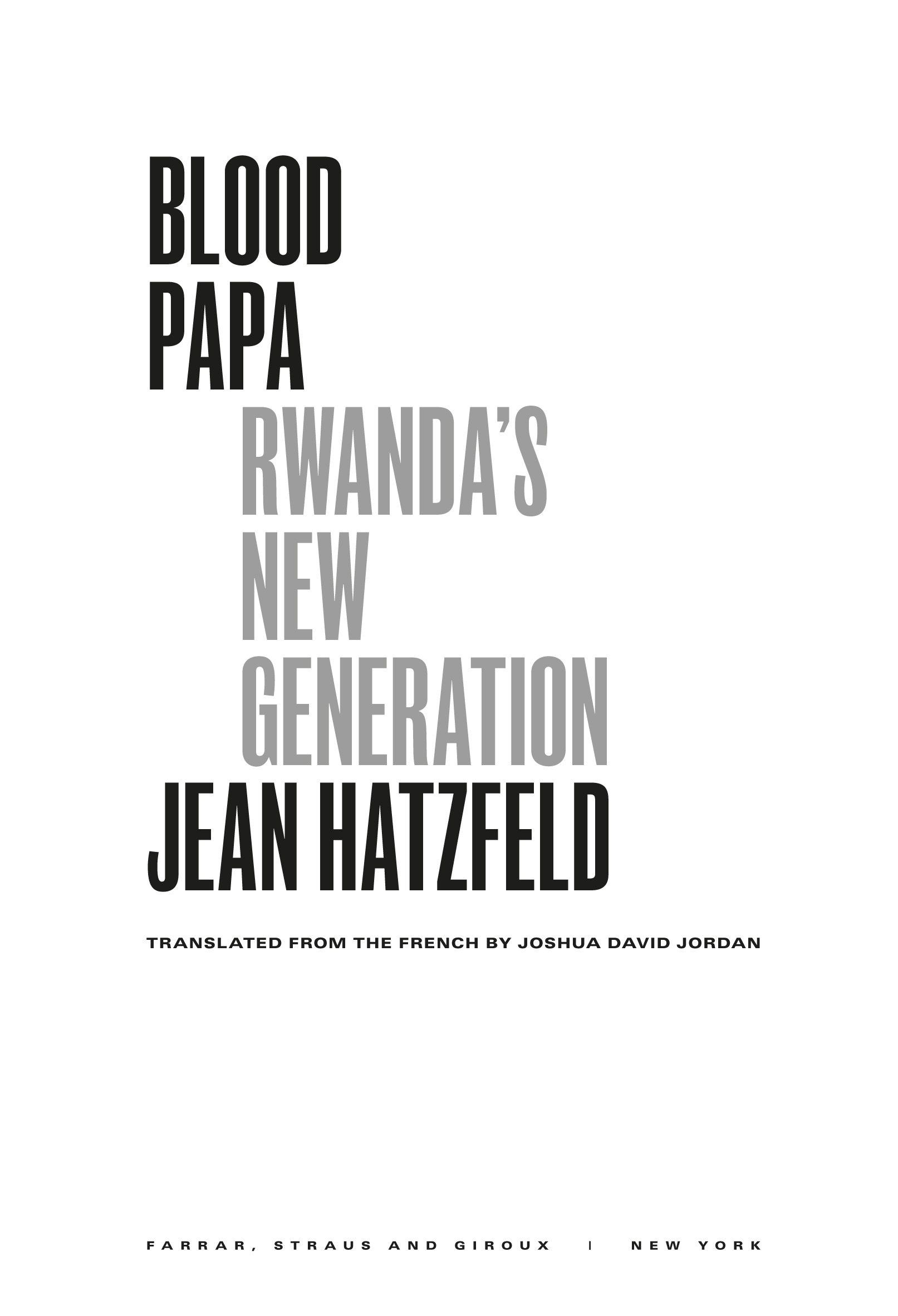
The author and publisher have provided this e-book to you for your personal use only. You may not make this e-book publicly available in any way. Copyright infringement is against the law. If you believe the copy of this e-book you are reading infringes on the authors copyright, please notify the publisher at: us.macmillanusa.com/piracy.
Once the bushes and branches rise high enough to scrape the vehicles top, we are driving in a green penumbra, stealing through what resembles a lush underground passage. But this is no adventure. We have already been down the now-overgrown road leading to Nganwa. At its end, on the hillside, lived Ignace Rukiramacumu. And there he is, right in front of usIgnace, the man clad in peculiar calf-length pants. He scurries barefoot behind a young woman striding ahead, her hair covered in a very lovely yellow turban. He seems to be yelling at her. It is a surprise to find him here, since he should be breaking stones at a work camp some fifty kilometers away. He carries a bundle on his head and turns around at the sound of our car and laughs. His dry, time-creased face hasnt changed a bit since our last visit. More startling still is discovering the old tricksters wily gaze intact and the same sardonic look.
He tells us that he returned that very day from three years of work reeducation, fulfilling his travaux dintrt gnral , during which he cleared roadsides, crushed loose rock, and ate tins of sauceless beans. He was sixty-two years old at the time of the killings in 1994. His peers exempted him from the expeditions into the swamps, thinking the work too strenuous for his scrawny legs. This did nothing, however, to prevent him from poaching Tutsis. In the evenings, when the madness of the killings seemed finally to subside, he could be seen descending into the papyrus armed with the same bow he had once used to hunt waterfowl.
Upon his return from exile in Congo, he was imprisoned at the penitentiary in Rilima with the Kibungo gang, among whom he was the first to be released, thanks to a presidential pardon of older inmates. He came home scot-free. But ten years later his extravagant display of bad faith during the gaaa trials earned him a sentence to the work camp. Now, at eighty-one years old, he has served his time in prison, driven on, one gathers, by rank resentment.
The young woman with whom he is quarreling as we exchange news is not his daughter but his wife, Jeanne. On his way home today, he had gone to fetch her from the nearby mudugudu to which she had run away for a second time.
Ignaces house, a vast structure covered with beige tiles, preserves the memory of a former opulence despite the cracks in the walls and other stigmata of his incarcerations. He was a tireless farmerhis back bent over the earth on which his first wife exhausted herselfand an impressive innovator who owed his success to coffee crops.
We carry benches outside into the shade of the long, flowery branches of an umunzenze tree. The issue turns out to be simple. Ignaces captivity forced him to sell his best land to his daughters from a previous marriage. Jeanne received nothing from the sale save for the gibes and threats of the daughters, who lived next door, their eyes greedily fixed on the house. Jeanne, a woman who trudged across the country with her two children, seduced by the stout heart of a thriving widower and the promise of an immense plot of land, suddenly found herself alone. She feared losing all she had. So she took refuge in the mudugudu , settling in with a male friend, from whom she enjoyed more than basic hospitality. The power of love courses through her veins. She didnt know, she pleads, how long they were going to keep her husband in the camp. Ignace grumbles and jeers. He is surly, demanding unconditional surrender; she is stubborn, stipulating future guarantees on the land. The haggling promises to be long.
In the distance, one hears an animals nagging yelps, which are too guttural for the dog or the serval one sometimes comes across. It has been droning its single note since we arrived, as if the beast has always been there. Its barks rise from the bottom of the valley. An injured animal stuck in the mud, perhaps, or haunting the depths of the marshes.
In a previous book I wrote about Ignaces house: Built on a hill ridge in Nganwa, the house overlooks the Akanyaru River, rising above his land from a steep slope that affords one of the most magnificent panoramas in the region. Nothing has changed since then. Nowhere else can one take in such a sweeping view of the marshesnot from the hilly edge of Engleberts land, nor from the summit of the Cyugaro Forest, nor from the ridge path near Pancraces place. Nowhere else do the marshes arouse such wonder.
At the fields end, thickets studded with yellow flowers cover winding red-earth gullies. Farther down, the bright green of banana groves and the celadon of palm trees are outlined by peat fires. The vastness of the marshes extends beyond, blanketing the Akanyaru River, whose almost motionless course one senses more than sees. A sea of foliage stretches to the first mountain foothills, which dissolve mistily at the horizon. The rolling bottle-green of the papyrus predominates, flecked with brightly colored reeds and silvery flashes from the ponds in which the morning sun reflects its dazzling rays. Right now, the sun blinds with a stifling light, but later, as it tips behind the skyline, it will gild the horizon with first an orangey yellow then an eerie pink glow.
Before I discovered the marshes, it was impossible for me to imagine the scenes of the manhunts that Jeannette Ayinkamiye and Francine Niyitegeka had described and, in particular, to understand how the two of them had lasted for so many weeks. Once I saw the marshes, it was hard to pull myself away; I returned to them constantly, staring mesmerized through moments of doubt and disgust.
It was Ignace who said to me one day, as we were discussing the marshes: The corpses were rotting so quickly that we no longer recognized those we had struck. We came across death with nearly every step and yet we never imagined our own or that of our families. Death became at once routine and unreal. I mean, it left us untouched. The truth of the genocide is in the mouths of the killers, who manipulate and conceal it, and in the mouths of the dead, who have taken it away with them.
From where we sit, we hear, besides the yelps rising from the marshes, a background sound of herons raspy barks, the shriller squawks of white vultures gliding overhead, ibises bursts of laughter, and a concert of less distinct songs, perhaps parrots or tiny talapoin monkeys, which, they say, live here in throngs. As one approaches the muddy water, the cries are lost in the din of screeching frogs and egrets, of grunts and whirs. With a bit of luck, one spots a herd of warthogs wading at the edge of a pond and, more rarely, the raised head of a sitatunga antelope swimming in the brackish water. White waterlilies are lulled by the current. Pink orchids fringe islets of reeds. There, in the sludge, lie the families of Berthe and Claudine, Francines baby, Innocents parents and sister, Jeannettes mother, Angliques parents, Jean-Baptistes wife and son, and Ediths parents and parents-in-law. Thousands of bodies have sunk into the Akanyaru and Akagera marshes, which are haunted now by a crowd of ghosts who climb the hills to torment the living.


